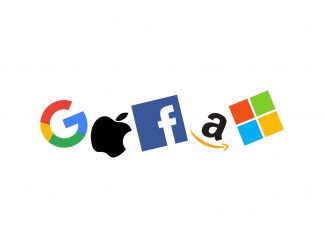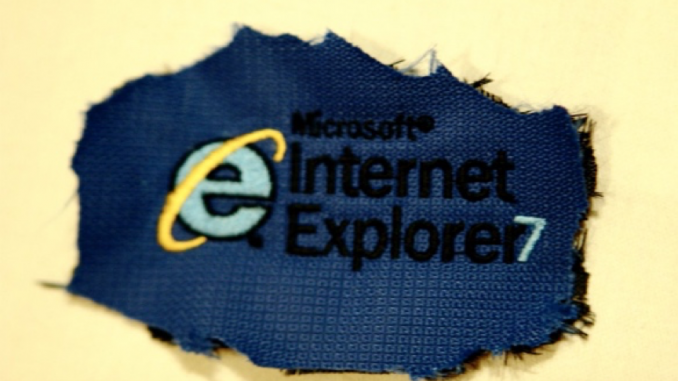
With the birth and development of the Internet gradually entering the daily life of society, our lives are inevitably linked to the characteristics of the Internet in a variety of relationships. The Internet conceptualizes the different thoughts of different people and embeds them into the structures it constitutes. The Internet has become a force that reduces or increases certain structures of inequality. This digital divide is reflected not only in gender, social class and disability but also in race. Search engines, as the system for indexing web pages on the Internet and as part of the media ecosystem, accentuate this problem. In line with the argument of Noble, when people explore the majority culture of color and minorities, the results search engines provide for them and their identities are influenced by the majority and commercials (Noble, 2018). However, the Internet is instrumental in helping to achieve racial equality through online activism and media vocalization, which is a positive development under the structure of inequality. Nonetheless, for the Internet to eliminate such inequalities, it needs an essential view of such issues rather than step up content censorship and functional changes.
Colored in the autocomplete search engine
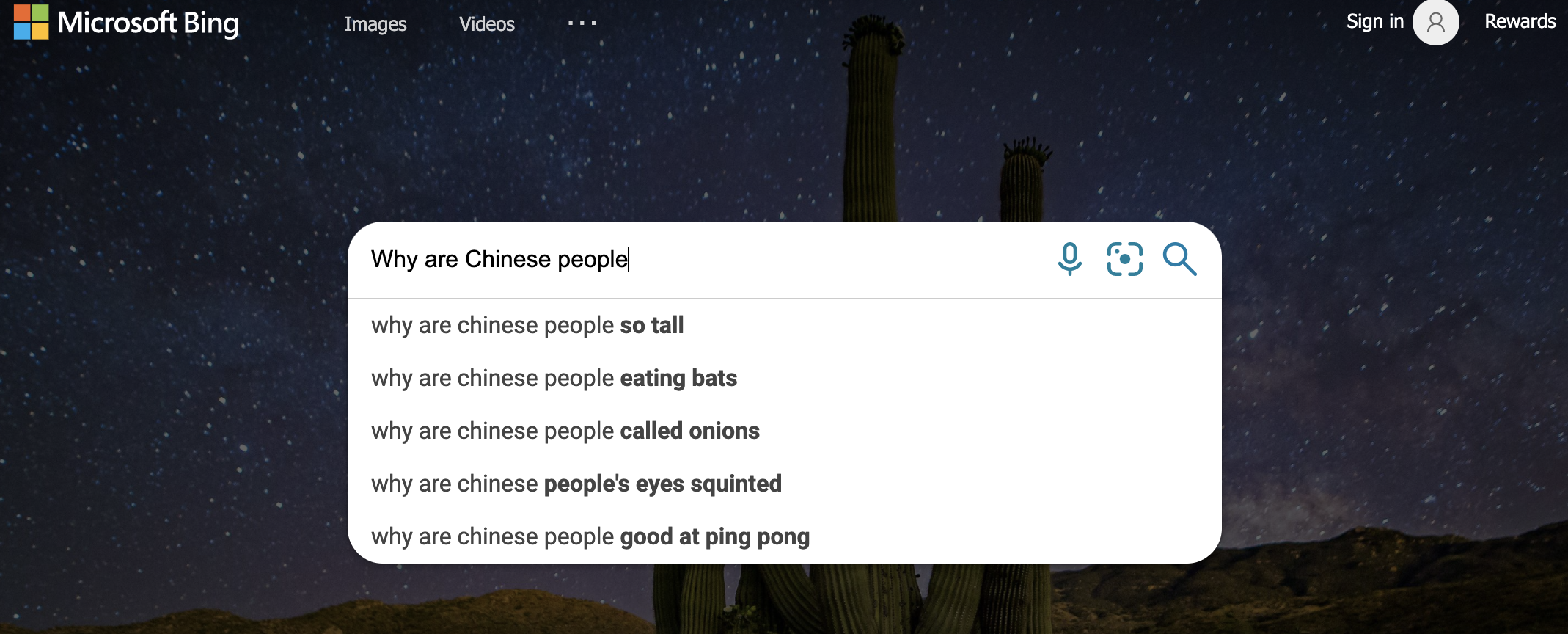
Google which is the world most popular search engine, was shown in a study in 2005 to have a 53.3 per cent global search engine usage (Halavais, 2013). However, considering the monetized and commercial nature of the data of Google, it is essentially an advertising company rather than a public service platform as perceived by users. Therefore, neither the auto-completion of Google nor its search results can guarantee neutrality. Google as a corporation with the power of information monopoly replicates and perpetuates the bias in the real world. As Noble (2018) states, Google has the ability to rank search results based on subject matter to promote its own commercial interests, and Google dominates frameworks and concepts that often resist people of color. As users perceive Google as a public resource with a non-commercial for-profit model, the results searched for are perceived as credible. When users search for “why are Chinese people”, the system automatically completes “why are Chinese people eat bats”, which may lead searchers to believe that bats are a common ingredient in China. The curiosity of users prompts them to click in to see, thus increasing the click-through rate. Under this circumstance, the commercial process of prioritizing search results based on paid ads leads to profitability and deepens prejudice against people of color. For Google, it is important to capture the attention of users (Noble, 2018). Oftentimes, different users can see similar content, but they do not realize that how the platform uses the previous search history and demographic information to shape search results (Noble, 2018). The information which is assumed to be “fact”, exists by reason of racism is profitable and the autocomplete system of search engines also is present in this social value (Noble, 2018). This is certainly once again convinced many users of their search results.
Whiteness over-represented and blackness bias
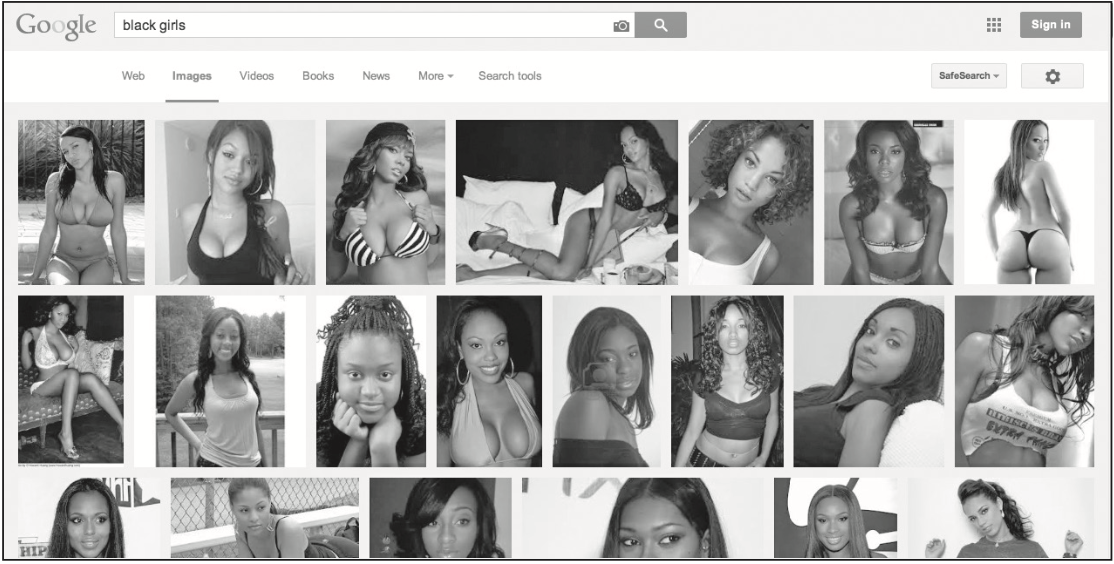
Noble (2018) points out that the Google search engine is at the forefront of racist discrimination. When entering “woman” or “girl” through Google Image Search, the vast majority are white women (including hijab-wearing, noseless, and disabled white women or girls) (Cohn, 2019). Not coincidentally, search results for the phrase “black women” make black women effortlessly sexual objects – fodder for pornography sites (Noble, 2018). Although people of color are not entirely absent in the Google Image Search- only three images of Asian girls and one image of the Black girl were found in the top fifty searches for “girls” – people of color are underrepresented in Google Image Search. These disparities are due in part to the fact that the number of Black people working at Google, especially women, is extremely low at 1.2 per cent of the workforce (Cohn, 2019). Search engines, as an Internet technology like any other, reflect the culture that exists in a way that cannot be separated from the larger context of society (Havalais, 2013). The rise of the communal movement in the United States from the 1960s onwards allowed many people to embrace the idea of cooperation and the idea of bringing science and technology forward. However, they were mostly well-educated whites (Lusoli & Turner, 2021). With the development of the Internet, Silicon Valley, a place of high technology and wealth, still has a majority of whites with similar cultural backgrounds. In addition, this idea of white supremacy on the Internet is not just a belief that whites are superior to other people of color, but it masquerades as a society dominated by whites, thus denying other people of color equal treatment economically, politically, and socially (Tarlson, n.d.).

The injustice of structural racism is further reinforced by the imbalance in Silicon Valley’s diverse structure with its artificial intelligence and software applications. The so-called neutral algorithms on the Internet have been manifested in this phenomenon. Noble (2018) argues that neutral search engines actually encode human biases and misconceptions into software systems. Our lives are increasingly governed by these systems and algorithms, and despite their erroneous judgments, these errors increasingly lead to racial structural inequalities (Noble, 2018).
Online activism
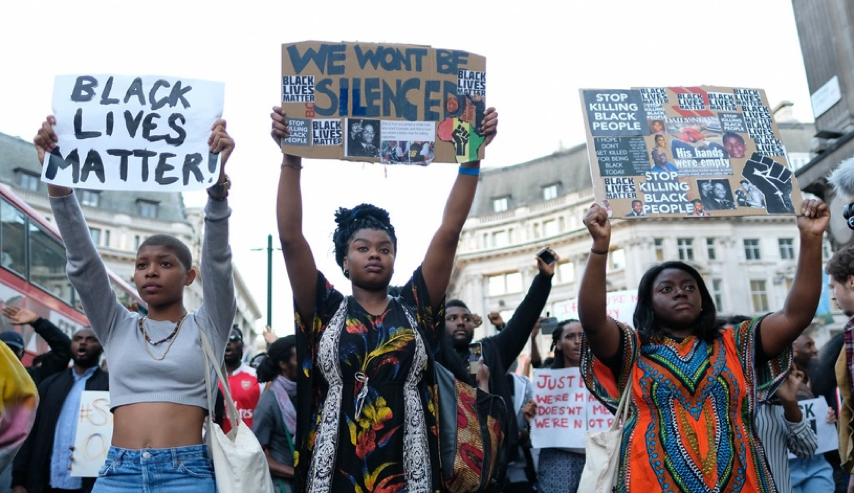
While search engines and their algorithms have become one of the major causes of structural racial inequality on the Internet, there are still platforms that have become a force to help give the race a voice and reduce inequality. One of the Twitter online activism that speaks out for racial discrimination is #BlackLivesMatter, which was founded by three black women in 2013. The campaign calls for equality for mental health, the LGBT community and voting rights, stopping police brutality and equal treatment of black people in the courts has also become one of the vital goals. After the events of Floyd in 2020, #BLM became a slogan for protests around the world and the hashtag was used tens of millions of times (Campbell, 2021). On Twitter, the number of tweets about the movement peaked, although the comments were not all in support of the campaign (Shah, 2021). In the face of this unprecedented mass protest, Twitter’s tweets were also heavily quoted in the media and on other social media platforms, bringing in a range of influential people such as celebrities and politicians to speak out. Although social media do not seem to have the same volume of movement as the protest marches, the ability of the Internet to spread information creates a more holistic understanding of different people of color and help society change its systematic view of racism (Shah, 2021). This movement of online activism has created a new foundation for reducing this inequality and will continue to fuel other movements of importance in the future.
Conclusion
The Internet is largely influenced by structural inequality. The Google search engine’s autocompleted system and Google image search expose the fact that the Internet is still Whiteness over-represented, profit-oriented and lacking in diversity. This structural inequality is exacerbated by the trust from users on the Internet, especially in racism. While social media activism has contributed to reducing this inequality, while it will take a long time to develop to eliminate structural inequalities.
References
Campbell, A. (2021). What is Black Lives Matter and what are the aims?. BBC News. Retrieved 15 October 2021, from https://www.bbc.com/news/explainers-53337780.
Cohn, J. (2019). Google’s algorithms discriminate against women and people of color. The Conversation. Retrieved 15 October 2021, from https://theconversation.com/googles-algorithms-discriminate-against-women-and-people-of-colour-112516.
Halavais, A. (2013). Search engine society: Search Engines. (pp. 5-31). Wiley.
Lusoli, A., & Turner, F. (2021). “It’s an Ongoing Bromance”: Counterculture and Cyberculture in Silicon Valley—An Interview with Fred Turner. Journal of Management Inquiry, 30(2), 235–242. https://doi.org/10.1177/1056492620941075
Noble, S. U. (2018). Algorithms of oppression: how search engines reinforce racism. (pp. 15-63). New York University Press.
Shah, U. (2021). Black Lives Matter and Twitter.. ArcGIS StoryMaps. Retrieved 15 October 2021, from https://storymaps.arcgis.com/stories/3eacb4a6bb844185afaf57c7c0bd3832.
Tarlson, C. White Supremacy Still Reigns in Silicon Valley – The Doe. Thedoe.com. Retrieved 15 October 2021, from https://www.thedoe.com/narratives/white-supremacy-reigns-in-silicon-valley.

This work is licensed under a Creative Commons Attribution-NonCommercial-ShareAlike 4.0 International License.

